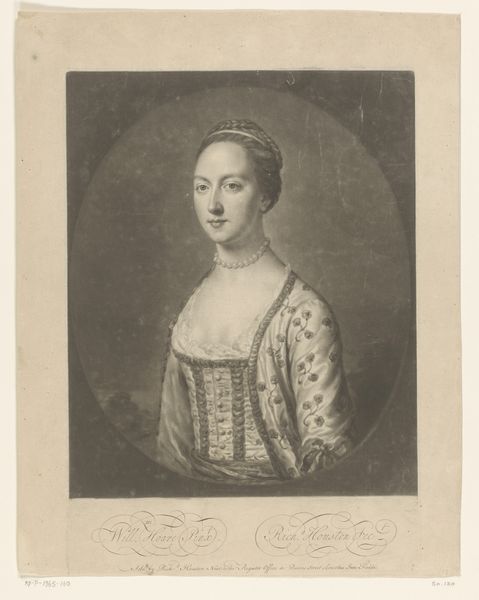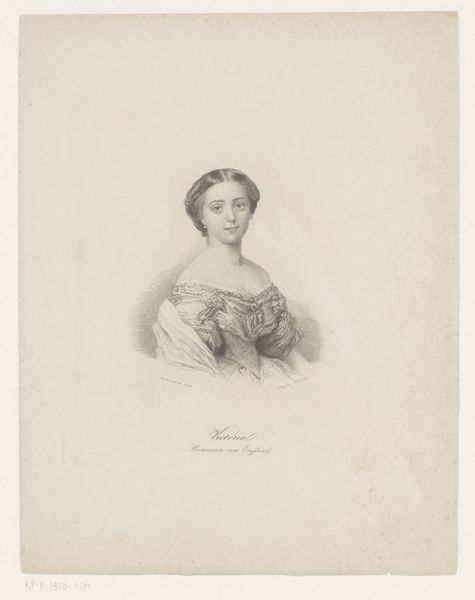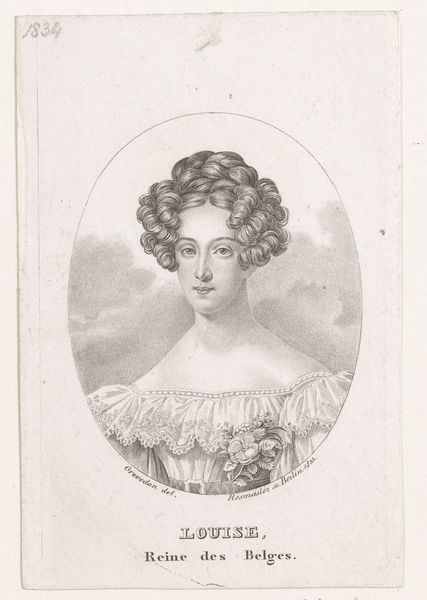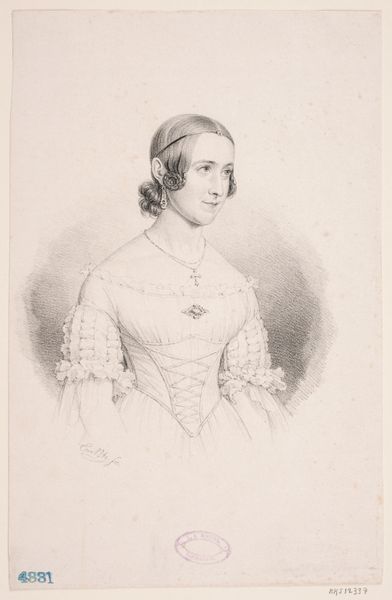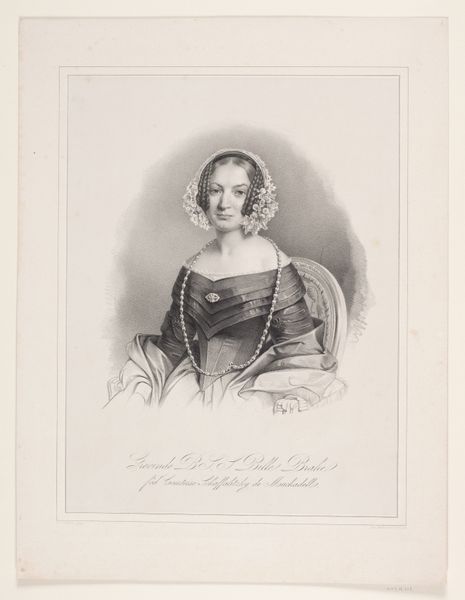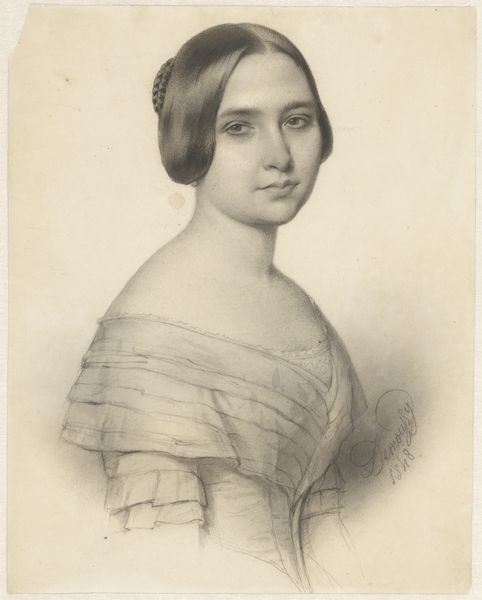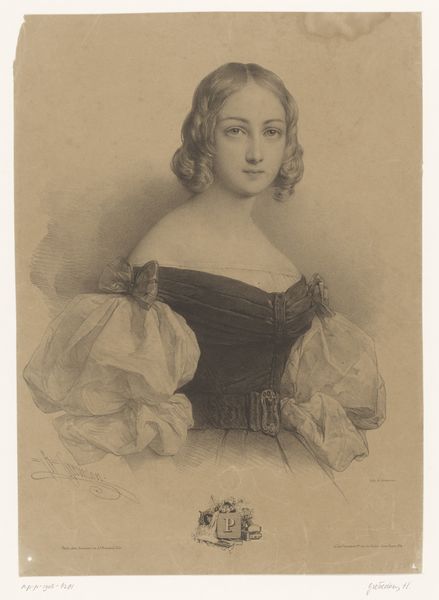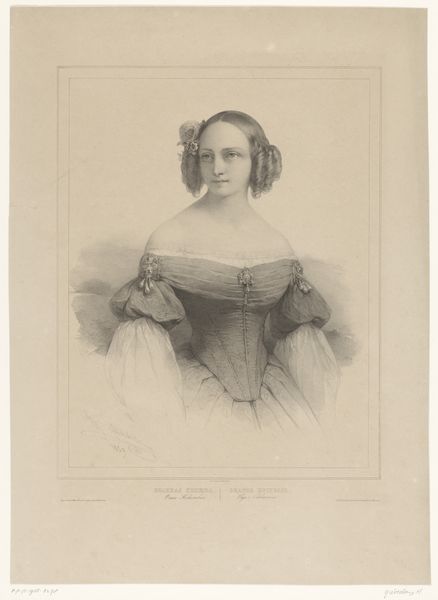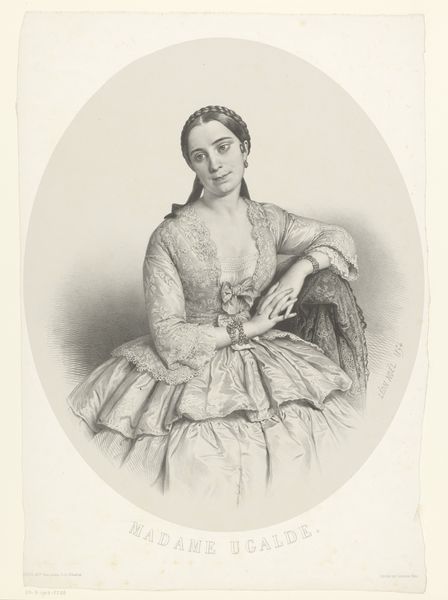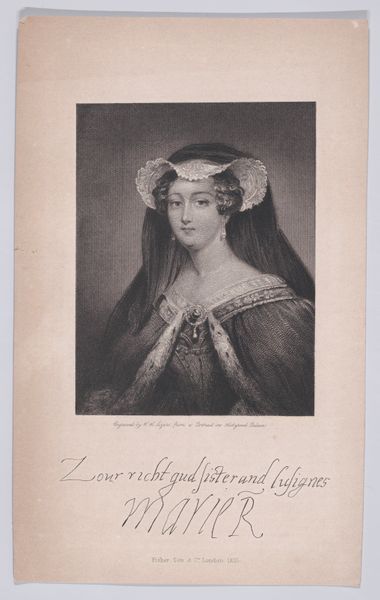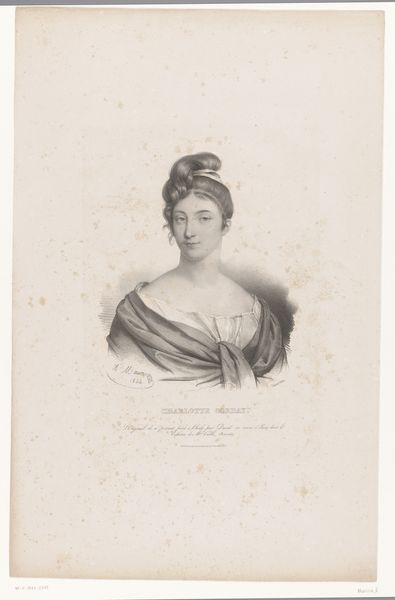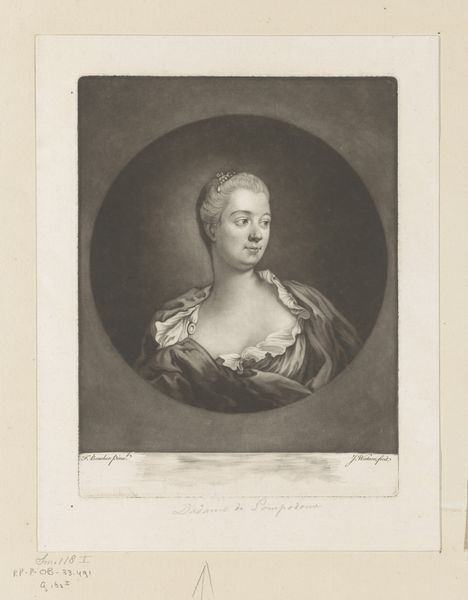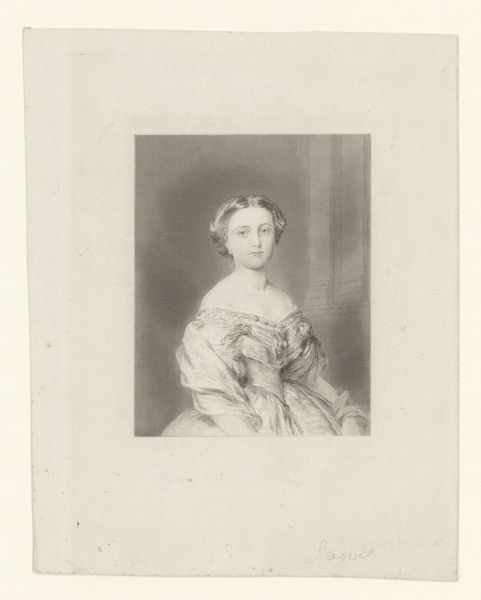
print, engraving
#
portrait
#
pencil drawn
# print
#
pencil drawing
#
romanticism
#
history-painting
#
engraving
#
realism
Dimensions: height 157 mm, width 109 mm
Copyright: Rijks Museum: Open Domain
Curator: This is an engraving dating from between 1810 and 1859 by Carl Kotterba, titled "Portret van een onbekende vrouw," or Portrait of an Unknown Woman. The inscription at the bottom labels her “Maria.” What do you make of it? Editor: The texture of the engraving is lovely, it gives a softness, almost an ethereal quality. The subject gazes slightly away, evoking a wistful, romantic mood. The light seems to caress her features, giving depth and volume without harsh contrasts. Curator: It's interesting you pick up on the romanticism; the piece reflects a burgeoning interest in history painting at the time and its intersections with contemporary social mores regarding female representation. "Maria" conforms, yet still, there's a sense of individual expression trying to break through. Editor: Precisely! Note how the lines, though delicate, precisely define the form. Her lace collar and the cascading drape around her arms showcase an understanding of texture and pattern, all constructed through variations of line weight and density. This precise use of the material gives the picture its strength. Curator: I wonder about her identity. The title suggests anonymity, yet the inscription hints at familiarity. Was this a portrait commissioned for a private collection? Or was "Maria" perhaps a known, perhaps scandalous, figure whom Kotterba wished to immortalize somewhat discreetly? Editor: I think the open window provides further insight. Beyond it, we can make out a rather indistinct landscape. I read the ambiguous background as a compositional element intended to highlight the figure, making her isolation more noticeable and symbolic. The picture directs all attention to her. Curator: It makes one question the artistic liberties and conventions in depicting women. Who was allowed to be seen, how, and why? The piece provides glimpses into the cultural expectations placed on women in that era—their beauty, their reserve, their ambiguous presence within both domestic and public spheres. Editor: Ultimately, the power of the artwork stems from how the medium is expertly controlled and crafted in tonal balance and subtle nuances of line. Curator: And understanding context and meaning can prompt one to interrogate assumptions about gender roles and social dynamics, and that adds an interesting layer to appreciating this portrait.
Comments
No comments
Be the first to comment and join the conversation on the ultimate creative platform.
